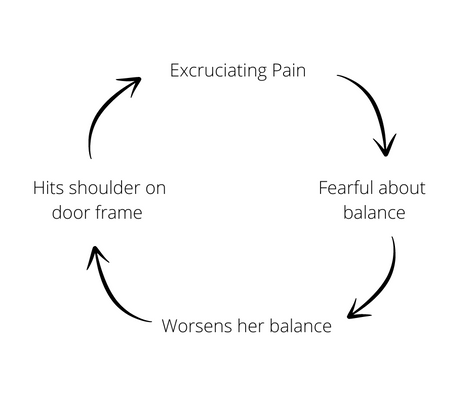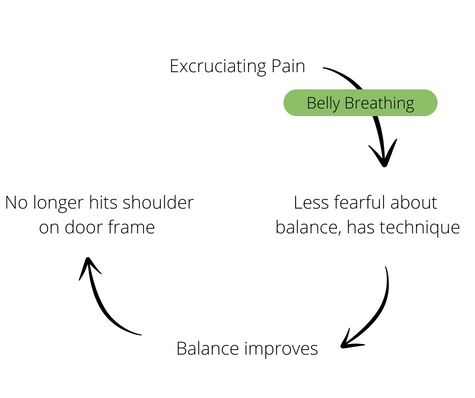The Use Of Educational Kinesiology In A Case Of Phantom Pain
- Jean Jordan
- Sep 16, 2022
- 4 min read
Updated: Sep 5, 2023
For the past 18 years, I've been integrating Educational Kinesiology into my chronic pain practice. Clinical research I conducted in 2005 provided evidence of the effectiveness of Educational Kinesiology protocols in treating clients with musculoskeletal pain, regardless of its duration. Last year a client really pushed my therapy to the most challenging pain problem, phantom pain.
"Here I want to share with you three of the Educational Kinesiology specific treatments that were used. Used to a surprisingly successful level."
Pain In A Limb That Isn't There?
Imagine if you had lost an arm, leg or foot due to trauma or disease - but that the limb, that you no longer had, suffered with constant pain? At times my client Simon (not his real name) would find his pain unbearable.
The pain associated with phantom pain is often used as an introduction to neurology; the nervous system is causing the pain, as there cannot be any physical input coming from the limb as it's no longer there. Pain management specialists and neurologists often use phantom limb pain to demonstrate the complexity of constant or chronic pain and how the nervous system and the brain itself should be taken into consideration during the treatment of chronic pain.
How Educational Kinesiology Improves Brain Function
The strength of Education Kinesiology lies in the simple intentional movements that Educational Kinesiology practitioners use that have a fundamental effect on your brain. Changes sometimes can occur instantly as if by magic. Other changes need more time requiring the intentional movements or techniques to be repeated for some days or weeks. This shows that the neural networks and, concomitant connections need time to be established.
What I'm going to share with you here are three of the actual treatments or techniques that I used at various times throughout Simon's treatment.
Activity One - A Breathing Technique To Stop Pain.
One answer to tackle his unbearable pain came to mind. It was a technique that I'd used in my initial clinical research project in 2006. An elderly woman was living with a broken humeral head and was on a waitlist for surgery. As she moved around home she constantly worried about her balance as knocking on her shoulder produced unbearable pain.
Here's the technique I taught her to use:
Take a big deep breath.
Hold your breath for a moment.
Exhale using three short puffs, like trying to blow out a candle.
Repeat this with three more deep breaths.
Just as we can distract a two-year-old child, we use this concentrated, focused technique to distract the brain from the incessant pain messages. With continual use, this can change reactions and patterns in the brain.
Activity Two - Contralateral Movement To Simultaneously Fire Neural Pathways.
An interesting thing happens when messages travel from your brain to your body to make your leg or arm move; the nerves that carry the messages actually cross over in the brain stem, the bottom section of your brain. When you walk, the left hemisphere of your brain directs your right arm; your right directs the left leg, thereby requiring both hemispheres to fire simultaneously.
When you are extremely stressed or suffering severe pain normal brain functioning can be difficult if not impossible, so it was not surprising that Simon, when lying on the massage table found contralateral movement impossible. It took several consultations and weeks of practice to be able to start this integrated movement using the opposite arm to leg.
Activity Three - Writing By Continually Crossing The Midline
The final technique I'll discuss today is an activity that was used towards the end of Simon's treatment. It's interesting to note here that Simon had always used printing whenever he did any writing as opposed to cursive writing that most of us use. That was about to change. I think the easiest way to describe this activity is to watch the video below. I suggest you arm yourself with blue tac, blank sheets of paper, a pen or coloured pencils, as this is a very fun activity.
"Educational Kinesiology is about making changes, not only did Simon's pain reduce with many techniques and his understanding of my explanations of neurology, he also had a profound change in his relationships, attitude and enjoyment of life."
Integrating The Use Of Educational Kinesiology
Educational Kinesiology utilises the brain’s ability to change, neuroplasticity. The success of the three techniques above is their use and practice when appropriate. For example, practising contralateral movement to improve brain integration you must continually stopping and restarting, as this is the challenging part, initiating the neural firing. The final technique of writing the alphabet with crossing the midline activity, has a multitude of benefits; not only improving handwriting and creative ideas, but it can also be a very calming process. I have often used this activity to great effect with people recovering from a stroke; they really enjoyed sitting and doing this activity, especially on a large sheet of paper. For this reason, and seeing changes in their happiness, I believe that it’s a tool for personal development and growth.
In her book Smart Moves, Carla Hannaford (2005) talks about the misconceptions of "micro-interventions", such as those discussed above, simple movements that take little time, and no involvement in technology, hence can they really be useful?
My answer to that is a resounding yes! The practitioners of Educational Kinesiology will have many similar stories to tell and I'm sure Simon will always be an advocate for the activities we did together that resulted in not only a reduction of pain, techniques to use in future difficult times and a real improvement in personal and social interactions.
This article is the opinion of the author Jean Jordan and should not replace professional diagnosis and treatment from your doctor.
Reference:
Carla Hannaford, (2005), Smart Moves: Why learning is not all in your head. Great River Books.









Comments